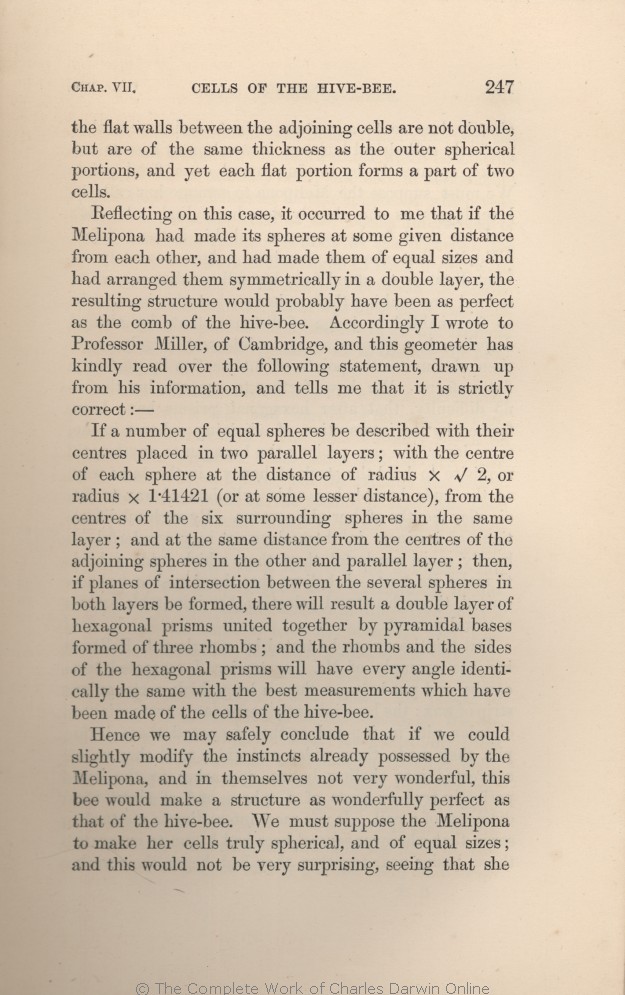|
the flat walls between the adjoining cells are not double, but are of the same thickness as the outer spherical portions, and yet each flat portion forms a part of two cells. |
|
Reflecting on this case, it occurred to me that if the Melipona had made its spheres at some given distance from each other, and had made them of equal sizes and had arranged them symmetrically in a double layer, the resulting structure would
probably | probably 1859 1860 1861 1866 1869 | probably 1872 |
|
|
If a number of equal spheres be described with their centres placed in two parallel layers; with the centre of each sphere at the distance of radius ×
√ | √ 1859 1860 1861 1866 1869 | | √2, 1872 |
| 2, 1859 1860 1861 1866 1869 | 2, 1872 |
| 1 blocks not present in 1859 1860 1861; present in 1866 1869 1872 | | But I hear from Prof. Wyman, who has made numerous careful measurements, that the accuracy of the workmanship of the bee has been greatly exaggerated; so much so, that,
as he adds,
whatever the typical form of the cell may be, it is rarely, if ever, realised.
|
|
|
Hence | Hence 1859 1860 1861 1866 1869 | | Hence, 1872 |
| that 1859 1860 1861 | | that, 1866 1869 1872 |
| make 1859 1860 1861 |
| have the power of forming 1866 1869 1872 |
|









